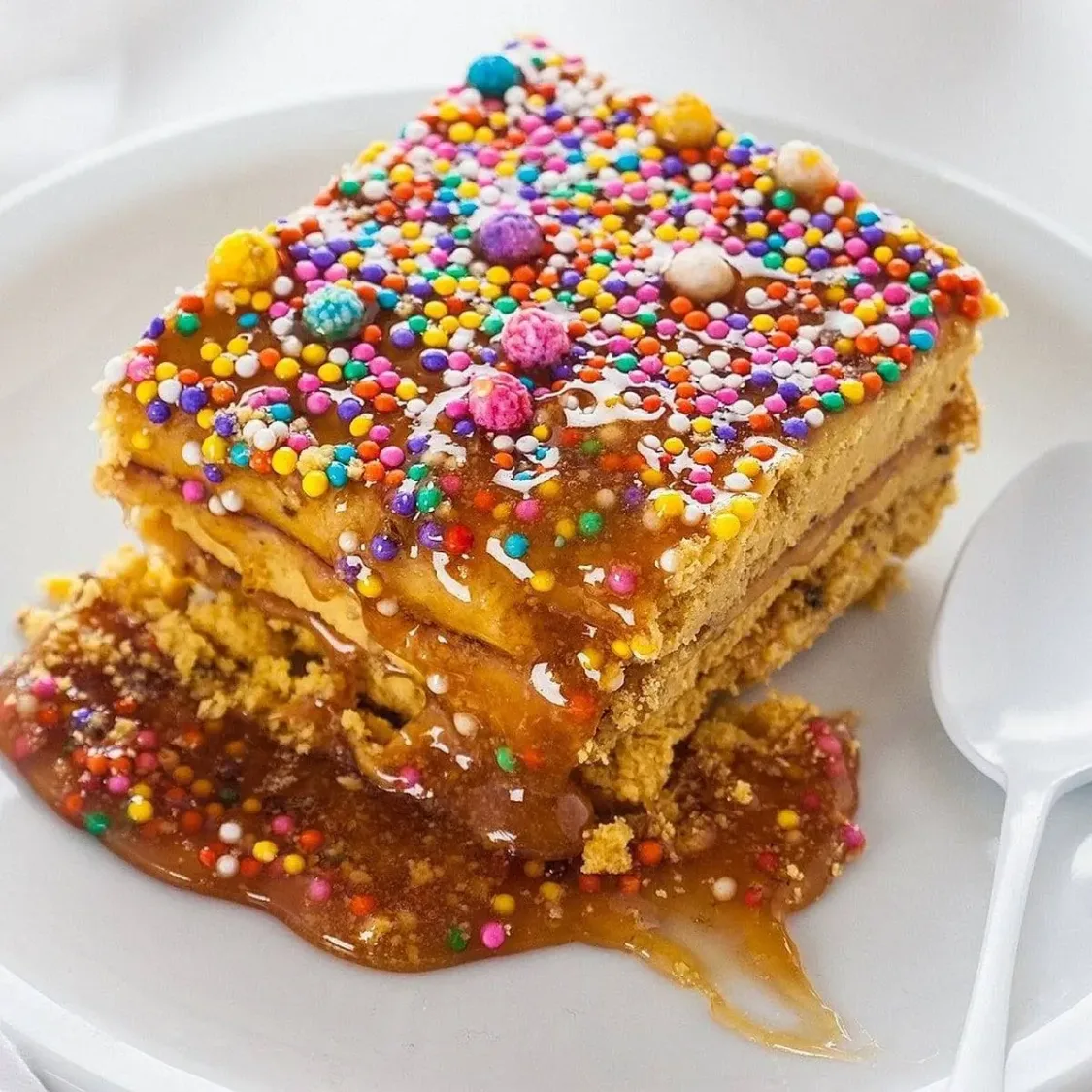
Turrón de Doña Pepa
Anise cookie bars layered with dark honey syrup.
Ingredients
- •Flour
- •Anise
- •Honey
- •Butter
- •Sprinkles
Instructions
Make Dough
Prepare anise cookie dough. (20 mins)
Bake
Bake cookie bars until golden. (25 mins)
Make Syrup
Prepare honey syrup. (15 mins)
Assemble
Layer and decorate with syrup and sprinkles. (10 mins)
Turrón de Doña Pepa is a beloved Peruvian dessert consisting of anise-flavored cookie bars layered with a rich dark honey syrup and colorfully decorated with sprinkles. This unique confection is particularly associated with the month of October and the Lord of Miracles religious festival in Peru.
The dessert's fascinating origin dates back to the 18th century when, according to legend, an Afro-Peruvian woman named Josefa Marmanillo (nicknamed Doña Pepa) created this recipe after being miraculously cured of paralysis. She attributed her healing to the Lord of Miracles and offered her creation during the religious processions, leading to its traditional connection with the October festivities.
Making Turrón de Doña Pepa is a labor of love that requires skill and patience. The cookie bars are made from a dough flavored with anise seeds and spices, rolled out and cut into strips, then baked until golden. The signature dark syrup, made from chancaca (raw sugar cane), spices, and fruit, is poured over layers of the cookies. The dessert is finished with a generous sprinkle of colorful candies and decorations.
While the traditional recipe remains sacred, some modern bakers experiment with variations like adding chocolate coating, using different spices in the dough, or incorporating local fruits into the syrup. However, purists insist that the original recipe, with its distinct anise flavor and honey-like syrup, should be preserved.
In Peru, Turrón de Doña Pepa is sold year-round but consumption peaks dramatically during October. Street vendors, bakeries, and markets offer this treat in various sizes, from small individual portions to large family-sized blocks. It's often enjoyed as a snack or dessert, particularly after attending the Lord of Miracles processions.
This dessert is quite sweet and calorie-dense, with a single serving containing approximately 300-400 calories. The combination of cookies, sugar syrup, and candy toppings makes it high in carbohydrates and sugar. While it's naturally vegetarian-friendly, those with anise allergies or sensitivities should be cautious. The dessert contains gluten from the flour used in the cookies, making it unsuitable for those with celiac disease or gluten sensitivity. Given its sweetness, it's best enjoyed in moderation, perhaps shared with family and friends during special occasions.
